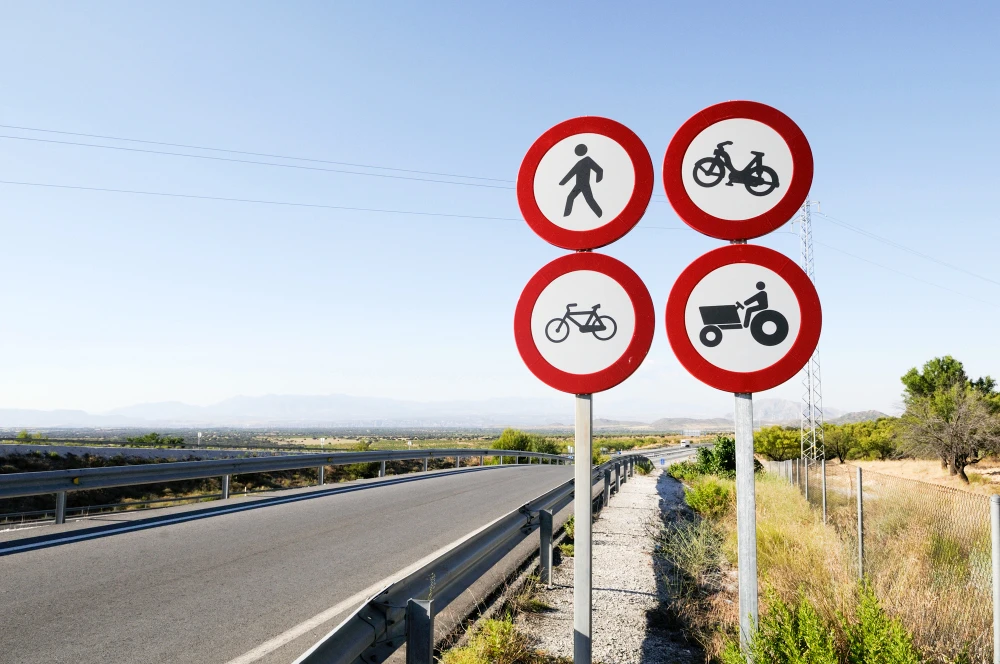Advancing Road Safety Globally: A Look at AI and Innovative Solutions
Category: AI Camera
In an era of technological breakthroughs, countries around the world are harnessing the power of artificial intelligence (AI) and other innovative solutions to revolutionize road safety. From smart infrastructure to predictive analytics, let’s explore how diverse nations are leveraging these advancements to make their roads safer for everyone.
1. United States: Smart Cities and Intelligent Traffic Management
- In the United States, the focus on smart cities is transforming the way we approach road safety. AI-driven systems are integrated with traffic lights, cameras, and sensors to monitor traffic patterns in real-time. This data is then analyzed to optimize traffic flow, reduce congestion, and enhance overall road safety. Cities like Los Angeles and New York are at the forefront of this technological evolution, paving the way for safer urban transportation.
2. India: AI for Traffic Management and Law Enforcement
- In India, where traffic conditions can be challenging, AI is playing a crucial role in managing congestion and enforcing traffic regulations. AI-powered traffic management systems, equipped with surveillance cameras and analytics, aid law enforcement in monitoring traffic violations and ensuring compliance. This proactive approach contributes to a safer and more orderly flow of traffic.
3. Sweden: Vision Zero and Sustainable Safety Measures
- Sweden’s Vision Zero initiative aims to eliminate road fatalities entirely. The country has implemented a holistic approach, combining AI technologies with sustainable safety measures. Intelligent speed assistance (ISA) systems, coupled with predictive analytics, contribute to a safer driving environment by encouraging compliance with speed limits and proactively addressing potential hazards.
4. Japan: AI-Powered Driver Assistance for Aging Populations
- Japan, with its aging population, is turning to AI to address specific road safety challenges. Advanced driver assistance systems (ADAS) equipped with AI algorithms enhance safety for elderly drivers by providing real-time alerts for potential dangers. These innovations contribute to making Japan’s roads more inclusive and accommodating for all age groups.
Conclusion
In conclusion, the global landscape of road safety is undergoing a transformative shift with the integration of AI and innovative solutions. As countries tailor these technologies to address their specific challenges, the collective impact is a safer, more efficient, and more inclusive road network. The continued collaboration and exchange of best practices on a global scale promise a future where road safety is a shared commitment, transcending borders for the well-being of all road users.
CASE STUDIES
Case Study 1: United Kingdom - Predictive Policing with AI
Challenges:
- The United Kingdom faced challenges in efficiently allocating resources for traffic policing and accident prevention. Traditional methods were reactive, often leading to delays in addressing high-risk areas.
Solutions:
- The UK implemented an AI-driven predictive policing system that analyzed historical traffic data, accident records, and weather patterns. Machine learning algorithms identified high-risk zones prone to accidents, enabling law enforcement to proactively deploy officers and resources to these areas.
Outcomes:
- The predictive policing system resulted in a significant reduction in accidents and traffic violations in targeted zones. Law enforcement’s proactive presence served as a deterrent, contributing to improved road safety. The UK’s approach showcases how predictive analytics can be a powerful tool in preventing accidents before they occur.
Case Study 2: Singapore - Autonomous Vehicles for Precision Safety
Challenges:
- Singapore faced challenges related to increasing traffic congestion and the need for a safer and more efficient transportation system.
Solutions:
- Singapore introduced autonomous vehicles equipped with AI technologies for navigation, hazard detection, and decision-making. These self-driving cars were integrated into the existing transportation network, offering a glimpse into the future of automated transportation.
Outcomes:
- The deployment of autonomous vehicles in Singapore led to a reduction in accidents caused by human error. The precision and responsiveness of AI-driven systems enhanced overall road safety, and the successful integration of autonomous vehicles laid the foundation for a more efficient and sustainable transportation ecosystem.
Case Study 3: Australia - AI-Powered Traffic Lights for Smoother Flow
Challenges:
- Australia faced challenges related to urban congestion, leading to increased commute times and road safety concerns.
Solutions:
- Australia implemented AI-powered traffic lights that analyzed real-time traffic data, adjusting signal timings based on current conditions. The intelligent traffic management system aimed to reduce congestion and enhance the overall flow of traffic.
Outcomes:
- The AI-powered traffic lights in Australia contributed to a noticeable improvement in traffic flow and a reduction in congestion. Commute times were shortened, leading to a more efficient and safer transportation experience for both drivers and pedestrians.

